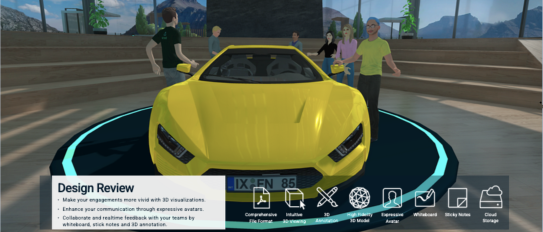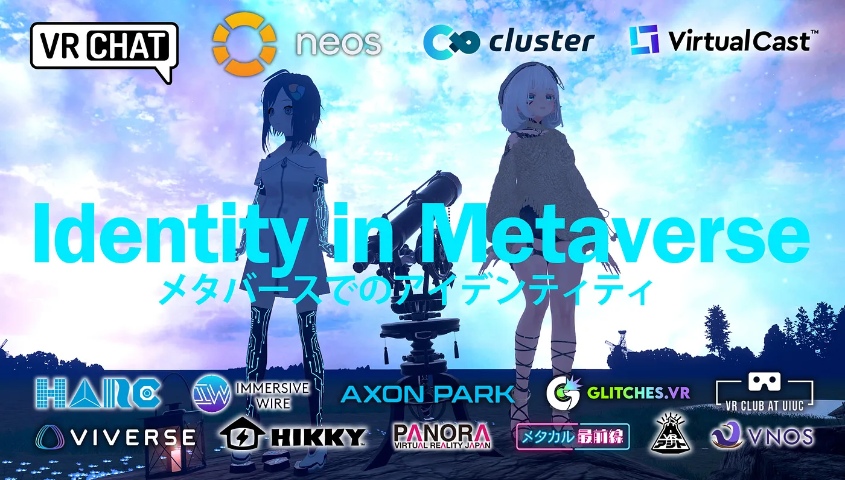What are the Benefits of Building a Metaverse Workplace?
Metaverse
12-minute read
Although many prominent companies have asked workers to return to the office , remote work has proven to be so advantageous for different areas of business operations that it’s unwise to completely return to the “old ways.”
Just like many emerging trends, remote work has its proponents and opponents .
"It helps businesses save costs," some would say. "There is no replacing the teamwork and camaraderie made possible via in-person interactions," others claimed. Confusion and dissension ensue.
Of course, neither side is wrong. As the shininess of a new trend that is remote work wears off, even the staunchest supporters have to recognize some possible drawbacks. However, there are undeniable advantages to enabling employees to work anywhere, anytime, and collaborate even when they're apart.
Hence, employers are looking into the latest technologies to accentuate remote work's benefits and eliminate some of the negatives.
Enter the metaverse and virtual reality (VR).
Many businesses have begun exploring the potential of creating collaborative experiences in VR or even constructing corporate campuses in the metaverse that can house the entire organization.
Before diving into how the metaverse and VR can impact the way you do business, let's first get familiar with the aforementioned new technologies.
What is VR?

Virtual reality or VR is a computer-generated environment that completely replaces a user's field of vision. Headsets that block out views and sounds of a user's physical surroundings are the hardware of choice .
VR is already prevalent in many business applications , such as simulating high-risk situations ( training pilots and heavy machinery operators), visualizing creative concepts ( showing interior design to a client ), and hosting marketing events (a gigantic launch party without space constraints).
What is the metaverse?
![]()
The metaverse concept is a three-dimensional (3D), immersive representation of the Internet, with eventually mirroring reality as one possible outcome.
The metaverse promises to blend the physical and digital , allowing people to conduct daily activities via avatars just as easily as they would in the real world or even accomplish tasks impossible with the existing Internet infrastructure or in-person interactions.
Imagine this. You can be the keynote speaker at a 100,000-participant global launch, then transport yourself immediately to different retail spaces to inspect the point-of-sale experience. Followed by returning to your office instantaneously for meetings with your team. All done with just a click of a button — multi-tasking and efficiency to the nth degree.
And you know what? This might only be the tip of the iceberg of what the metaverse can do for businesses and workers.
Metaverse and business: it's already happening.
For the metaverse to truly take off and be embraced by the business sector, it has to provide experiences worth it for employers, employees, and customers to change their existing behaviors.
Nikeland , created by the global apparel giant in the gaming metaverse Roblox, is one such example.
Roblox , an app that supports both two-dimensional screens and immersive devices, allows users to play and create games and provides social media features. It also caters to businesses, enabling brands to gamify e-commerce experiences to interact with customers and sell goods.
Modeled after the company's corporate headquarters, Nikeland is populated by user-created avatars that are personalized and styled in digital Nike apparel. It offers a wide range of sport-oriented games and consumer touchpoints to purchase both digital and real-world merchandise.
Here's another example. In early 2022, Vice Media Group announced the construction of a virtual headquarters in the metaverse platform Decentraland . According to the company, the new campus has the capacity for conventional business activities, such as providing individual workspace and hosting meetings, and will also serve as a research and development lab for leading-edge initiatives involving NFTs and Web3.
What are the pros and cons of a metaverse virtual workspace?
Speaking of recreating work environments in the metaverse, many of the world's largest organizations have shifted some of their operations into VR and the metaverse. Yet, as discussed at the beginning of this piece, there are both positives and negatives.
Here are the pros and cons of virtual workspaces in the metaverse:
Pros of virtual workspaces in the metaverse.

Reduced overhead.
There will be fewer expenditures related to maintaining brick-and-mortar offices. Rent, utility, and office upkeep are just a few areas of potential savings.
Unlimited space.
Construct a spacious and relaxing common area or meeting rooms with gorgeous views to foster mind-melding collaboration. Imagination is the only thing restricting what a metaverse office can be. Size, architectural infrastructure, layout, and décor — the sky's the limit for the future of work.
Travel and commute.
For multi-national conglomerates and individuals with lengthy daily commutes, tapping into the power of virtual reality and the metaverse has obvious benefits. Instantly transport colleagues from anywhere worldwide to the same virtual location, permitting closer communication and collaboration by overcoming distance and time.
Workflow and efficiency analytics.
When employees' every action is executed online, companies can collect an array of data invaluable to making informed and data-driven decisions. Scheduling, resource allocation, corporate culture, and hiring practices, to name a few, can all benefit from precise evaluation of business processes.
Cons of virtual workspaces in the metaverse.

New talent and equipment needed.
It's not controversial to suggest the metaverse could eventually eliminate certain traditional costs such as rent and utilities. But to reap the benefits of these cost cuttings, companies must first invest significantly in new human resource talent, hardware equipment, software tools, and employee education that will enable the organization to make the transition. Many of these initial investments are not one-time costs either.
The working environment in the metaverse can be just as good or even better than in the physical world, but it won't be cheap.
Screen time and health.
The ability to foster lifelike interactions anytime, with anyone, and from anywhere by simply putting on a VR headset is highly enticing for companies.
However, sedentary work experiences where every task is performed via screens and employees no longer have to move around physically have many negative health implications. VR technology still isn't quite there yet to facilitate eight to ten hours of daily immersion .
Privacy.
Although tracking employee activities and business processes could provide decision-makers with valuable data, it raises privacy concerns. Would people want to work for a company where their every move is watched, recorded, and analyzed?
Community and corporate culture.
And then there are human's natural instincts as social animals. Pandemic safeguards such as masks, social distancing, and quarantines prevented people from satisfying their need to be around others. Furthermore, effective communication, the foundation of a cohesive community, becomes more complicated when the opportunities to read body language and facial cues are removed (VR headset makers, however, have introduced facial , eye , and body trackers to facilitate more intuitive communication).
Over the last several years, business leaders have realized that there is simply no replacing in-person interaction when it comes to cultivating healthy and productive corporate cultures.
What is VIVERSE for Business, and how can it help your business?
Announced at MWC 2023, VIVERSE for Business , described as an "infinite, immersive place to learn, connect, and discover,” is a service created to simplify building virtual offices or even corporate campuses in VIVERSE .
The primary feature of the service is a portfolio of design-ready modules, providing a variety of options for architectural structures, interior designs, and environment backdrops. Companies can choose different "blocks" — like common spaces, reception areas, showrooms, meeting rooms, and auditoriums — to customize offices that fit their current needs but with future expandability.

For decision-makers curious about the metaverse or already seeing low-hanging fruits in the virtual world for operation improvements, it is a solution that enables companies to gradually and systematically increase their presence in virtual reality and stay in lockstep with business growth.

Another impressive feature is made for design-centric job functions. Visualize and review design concepts in fully immersive environments using high-fidelity 3D models. VIVERSE for Business supports a wide range of file formats and collaborative tools such as 3D annotation, cloud storage, whiteboarding, and sticky notes.
Speaking of collaboration, VIVERSE for Business is optimized for intimate meetings as well as large-scale presentations. In addition to some of the software tools already mentioned, it supports remote desktop and multiple-display setups and popular enterprise apps such as Teams and Zoom.
An avatar creator with a rich library of customization options is part of the service, allowing employees to personalize their digital self to fit any corporate culture and occasion.
![]()
For user privacy and enterprise security, VIVERSE for Business complies with global standards, including ISO 27701 and 27001, General Data Protection Regulation (GDPR), California Privacy Rights Act (CPRA), and the Building Security in Maturity Model (BSIMM).
The service supports smartphones, tablets, PCs, laptops, and immersive headsets. A hardware upgrade to VR headsets is optional; workers won't have to change their working habits immediately either — all positives for companies that want to gradually transition into the metaverse.
With technological advancements come potential convenience as well as unforeseen drawbacks. The metaverse is no different.
The positives of building an office or campus in an immersive virtual environment are plentiful — reduced overhead cost, improved work environment, remote collaboration, and data-driven decision making are just several ways the metaverse can make an impact.
Although work in the metaverse is still in its infancy, the potential is too great for any business to ignore. VIVERSE for Business , with its design-ready modules and complementary software applications, is an excellent service for companies to easily construct their virtual facilities brick by brick.


